When treating gastrointestinal problems in pets, Domperidone is a dopamine‑2 receptor antagonist that boosts gastric motility and enhances milk let‑down in lactating animals. It’s been a staple in both human and animal clinics for more than three decades, but vets still debate when it’s the right choice.
Why Domperidone Appears on the Vet’s Shelf
Domperidone belongs to the Prokinetic class of drugs that accelerate the movement of food through the gastrointestinal tract. In practice, that means it can help dogs with delayed gastric emptying, cats suffering from nausea, and dairy cows that need a milk‑production boost after calving. Its oral bioavailability (about 70 % in dogs) and limited crossing of the blood‑brain barrier make it safer than some older agents.
Key Veterinary Uses
- Canine gastroparesis: Low‑dose regimens (0.2-0.4 mg/kg BID) improve appetite and reduce vomiting within 48 hours.
- Feline nausea: Combined with a mild anti‑emetic, domperidone can curb drug‑induced nausea during chemotherapy.
- Dairy cow milk let‑down: A single 0.2 mg/kg injection can raise milk yield by 5‑8 % during the first week postpartum.
- Equine colic prevention: Used off‑label in high‑risk horses to keep the gut moving after long transport.
How It Works - The Pharmacology in Plain English
Domperidone blocks dopamine D2 receptors found in the gut wall. By doing so, it lifts the inhibitory brake on acetylcholine release, which in turn contracts smooth muscle and pushes food forward. In lactating mammals, dopamine also suppresses prolactin; blocking it lets prolactin rise, prompting the mammary glands to release more milk.
Pros: When Domperidone Shines
| Benefit | Typical Species | Evidence Level |
|---|---|---|
| Improves gastric emptying | Dog, Cat | Randomized clinical trials (2022‑2024) |
| Enhances milk let‑down | Cow | Field studies, >300 farms |
| Low CNS side‑effects | All species | Pharmacokinetic reviews |
| Oral tablets easy to dose | Dog, Cat, Small ruminants | Veterinary formulary entries |
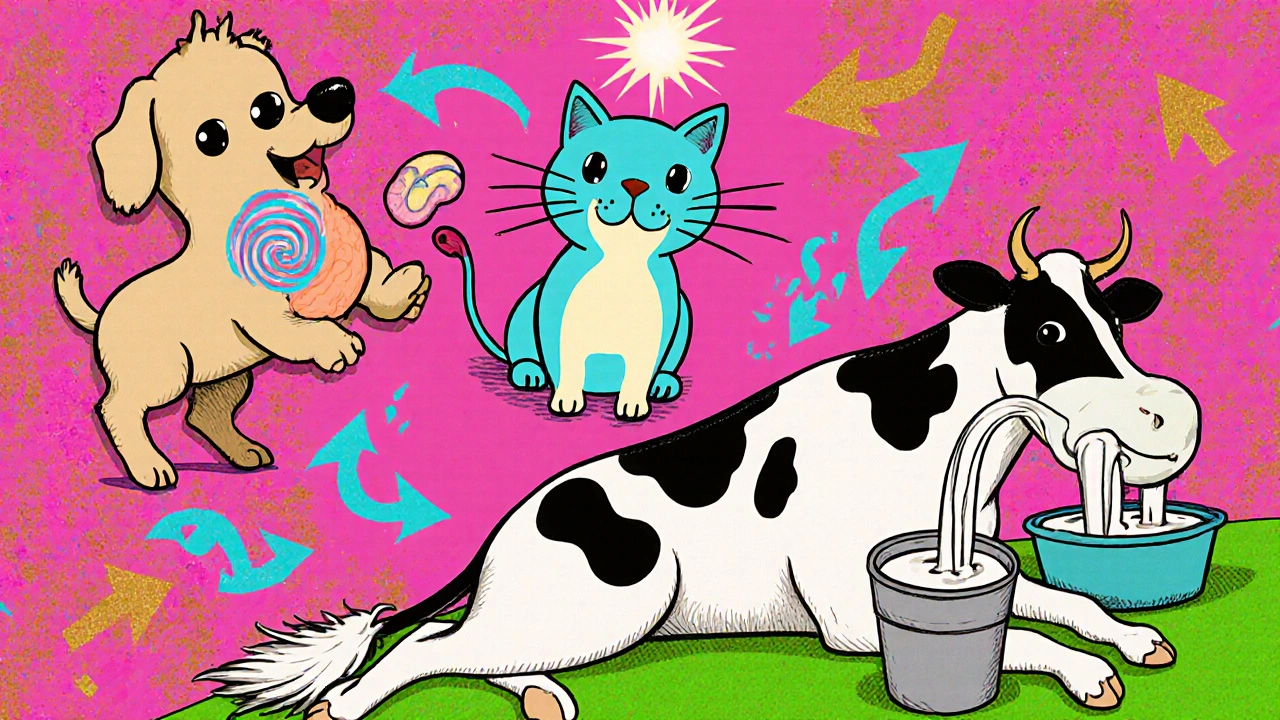
Cons: The Risks You Need to Weigh
| Drawback | Species Most Affected | Mitigation |
|---|---|---|
| Potential QT‑interval prolongation | Dog, Cat | Electrocardiogram screening in high‑risk patients |
| Gastrointestinal upset at high doses | All species | Start low, increase gradually |
| Variable withdrawal time for food‑producing animals | Cow, Goat | Observe 48‑hour withdrawal before milking |
| Interaction with macrolide antibiotics | Dog, Cat | Avoid concurrent use or monitor serum levels |
Dosage Guidelines - From Puppy to Lactating Cow
- Calculate body weight in kilograms.
- For dogs with gastroparesis, give 0.2 mg/kg orally every 12 hours. Adjust to 0.4 mg/kg if response is weak after 3 days.
- For cats experiencing chemotherapy‑induced nausea, administer 0.1 mg/kg PO BID; combine with a low‑dose anti‑emetic if vomiting persists.
- For dairy cows, inject 0.2 mg/kg subcutaneously once after calving; repeat after 24 hours if milk yield does not rise.
- Always consult the local regulatory body for withdrawal periods; most jurisdictions require at least 48 hours before milk or meat enters the food chain.
Comparing Domperidone with Other Prokinetics
Veterinarians often consider Metoclopramide another dopamine antagonist that also has serotonin‑5‑HT4 agonist activity as an alternative. The key differences are:
- Blood‑brain barrier penetration: Metoclopramide crosses more readily, leading to higher risk of sedation and extrapyramidal signs.
- Duration of action: Domperidone lasts 6‑8 hours, while metoclopramide needs q6h dosing.
- Regulatory status: Domperidone is approved for lactation support in many countries, whereas metoclopramide is often limited to gastrointestinal use.
In most cases, the lower CNS side‑effect profile makes domperidone the safer first‑line choice.
Practical Tips for Safe Use
- Check the animal’s cardiac history; breeds like Boxers and Dobermans are predisposed to arrhythmias.
- Avoid giving domperidone with erythromycin or clarithromycin, as they can increase plasma levels.
- Monitor fecal consistency during the first week; a sudden shift to watery stools may signal overdose.
- Keep a log of dosing times, especially for dairy cows, to meet withdrawal documentation.
- Consider supplementing with a probiotic to mitigate potential dysbiosis caused by faster gut transit.
When to Say No: Contraindications
Domperidone should be avoided in animals with known hypersensitivity, severe hepatic impairment, or a documented QT‑prolongation history. Recent studies (2023) also suggest caution in pets with chronic kidney disease because renal excretion accounts for roughly 30 % of clearance.
Future Directions - New Formulations on the Horizon
Researchers are testing a long‑acting injectable depot that could keep plasma levels steady for up to 10 days, potentially reducing the handling stress for large‑herd farms. Early data show a modest 4 % improvement in milk yield without increased cardiac events.
Quick Reference Checklist
- Identify the target species and specific indication.
- Calculate dose per kilogram; start low.
- Screen for cardiac risk factors.
- Check for drug interactions (especially macrolides).
- Document withdrawal times for food‑producing animals.
- Monitor efficacy and side‑effects for at least 5 days.
Frequently Asked Questions
Can I give human domperidone tablets to my dog?
Veterinary‑grade tablets are formulated for animal metabolism. Human tablets may contain filler substances that dogs can’t digest well, and the dosage calculations differ. Always use a vet‑prescribed product.
How long does it take to see a milk‑let‑down effect in cows?
Most farmers notice an increase in milk flow within 12‑24 hours after a single subcutaneous dose of 0.2 mg/kg.
Is domperidone safe for cats with chronic kidney disease?
Caution is advised. Dose reduction to 0.05 mg/kg and close monitoring of blood pressure and electrolytes is recommended.
What is the main reason domperidone can cause heart rhythm issues?
It can block cardiac potassium channels, leading to QT‑interval prolongation, especially when combined with other QT‑prolonging drugs.
Are there any natural alternatives to domperidone for stimulating milk let‑down?
Herbal galactagogues like fenugreek and goat’s‑milk‑derived probiotics have shown modest effects, but none match the consistency of domperidone in controlled studies.
In short, domperidone offers a solid mix of efficacy and safety when used correctly. Its domperidone veterinary profile makes it a go‑to drug for GI motility and lactation issues, but veterinarians must stay vigilant about cardiac monitoring and drug interactions. By following dosage guidelines, checking contraindications, and keeping a simple log, most animals benefit without serious side effects.

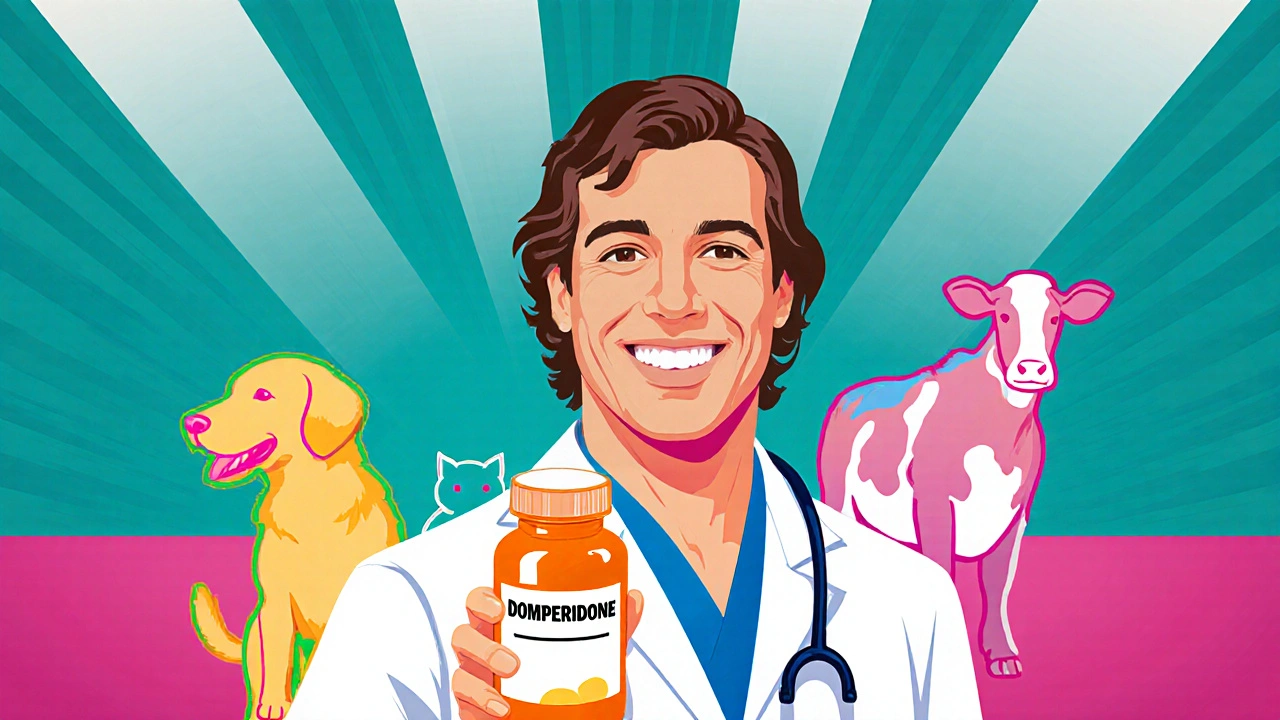

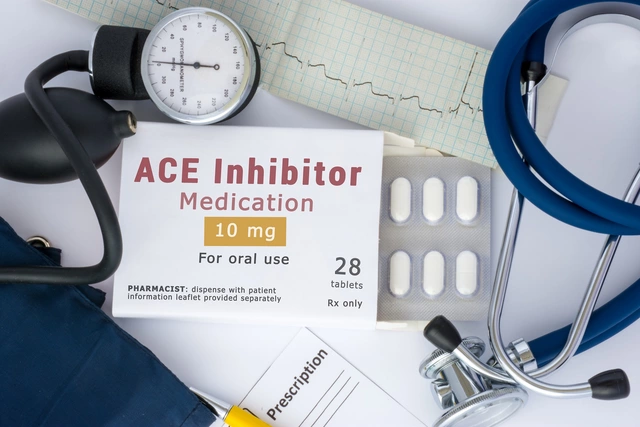

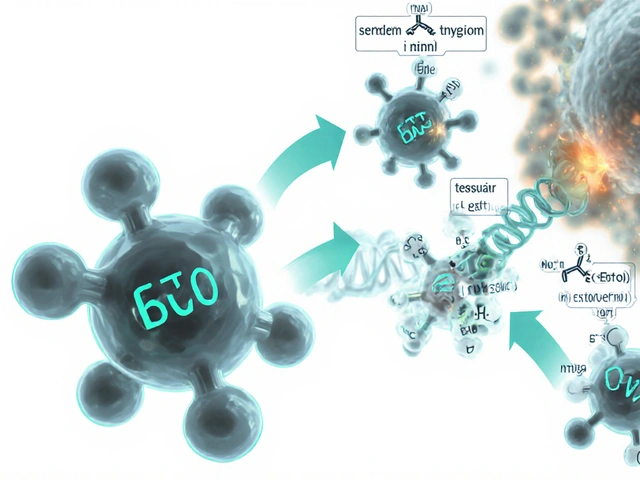
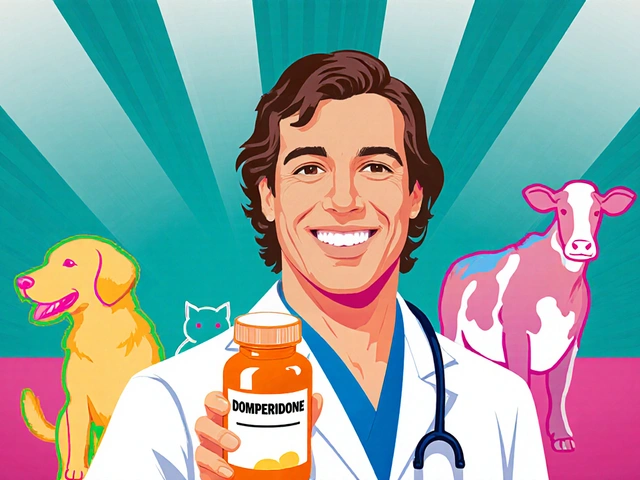
October 26, 2025 AT 19:37
Miracle Zona Ikhlas
Keep the dose low at first and watch the pet’s appetite.
A quick log of feeding times helps you see if the drug is kicking in.
Adjust by 0.1 mg/kg if you don’t notice improvement within a couple of days.
November 7, 2025 AT 08:20
naoki doe
Regarding the cardiac screening you mentioned, a baseline ECG is advisable even for seemingly healthy animals.
It’s not just a precaution for Boxers; many breeds can have silent QT issues.
Pairing domperidone with macrolides should be avoided unless you monitor plasma levels closely.
November 18, 2025 AT 22:06
Chris L
From my experience on a mixed‑breed farm, starting at 0.2 mg/kg really gets the gut moving within 24 hours.
If the response is muted, bump the dose up to 0.4 mg/kg and you’ll usually see a noticeable appetite boost.
Just keep an eye on stool consistency-loose stools can signal you’re overshooting.
Remember, the biggest payoff is a calmer animal that actually eats.
November 30, 2025 AT 11:53
Holly Kress
The milk‑let‑down effect usually shows up by the end of the first day after injection.
Monitoring milk volume each milking session gives you a clear picture of efficacy.
Ensure the withdrawal period is observed before the herd goes to market.
December 12, 2025 AT 01:40
Gary Campbell
They don’t want you to know how often domperidone is pushed by big pharma to lock farmers into costly repeat prescriptions.
The subtle QT risk is downplayed, but the data is out there for anyone who digs.
Stay skeptical and double‑check the label before you trust the marketing hype.
December 23, 2025 AT 15:26
Barna Buxbaum
Domperidone’s limited blood‑brain penetration is what makes it a favourite among vets for GI motility.
In dogs, the oral bioavailability sits around 70 %, so the tablets are reliably absorbed.
For cats, the dosage of 0.1 mg/kg BID works well when combined with a low‑dose anti‑emetic.
Just remember to avoid concurrent macrolides, as they can raise plasma concentrations and increase cardiac risk.
Overall, it’s a solid first‑line prokinetic when used with proper monitoring.